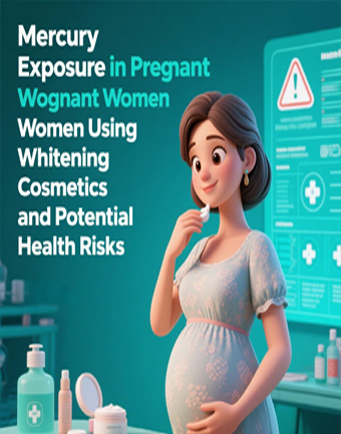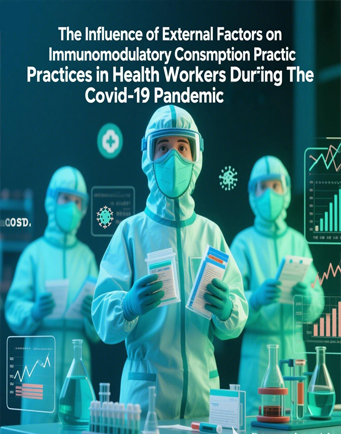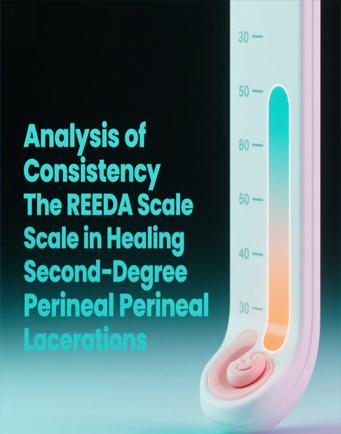Personal Hygiene and Soil Transmitted Helminth Incidence in Elementary School Students Amanuban Barat District, South Central Timor
Downloads
Soil-transmitted helminth infection remained a significant public health problem in many developing countries. Elementary school-age children dominated the cases in Indonesia due to poor personal hygiene. South Central Timor had the top three poverty and the highest stunting rates in East Nusa Tenggara. Research to examine the relationship between personal hygiene and the incidence of Soil-Transmitted Helminth infection had never been conducted in South Central Timor. The study population consisted of 279 elementary school students selected from Inpres Nulle Elementary School, Inpres Neonmat Elementary School, and GMIT Nulle Elementary School through the Multistage Random Sampling technique. It was obtained 160 children as the study samples. The study found that 46 children (29.0%) were positive for STH, and 114 (71.0%) were negative for STH. Furthermore, 30 (65.2%) were positive for hookworm, 14 (30.4%) were positive for Ascaris lumbricoides, and 2 (4.4%) children had mixed infections. Multiple Logistic Regression Tests showed a significant effect of washing hands with soap after defecating with p = 0.031 and OR = 7.158. Thus, if a child did not wash his hands with soap after defecating, he had a risk of STH infection by 7.158 times. Furthermore, the effect of eating habits obtained a p = 0.038 and an OR value = 0.133 with the possibility of eating habits that did not protect against STH infection. In addition, the effect of dirty nails obtained a p=0.064 and an OR=5.264, which indicated the risk of contracting STH by 5.264 times. The effect of snacking habit obtained a p = 0.005 and an OR=0.121. It can be concluded that the incidence of STH was simultaneously influenced by the habit of defecating on the ground, washing hands without soap after defecation, eating raw food, having dirty nails, and having poor snacking habits.
Ali, R. U., Zulkarnaini, Z., & Affandi, D. (2016). Hubungan personal hygiene dan sanitasi lingkungan dengan angka kejadian kecacingan (soil transmitted helminth) pada petani sayur di kelurahan maharatu kecamatan marpoyan damai kota pekanbaru. Dinamika Lingkungan Indonesia, 3(1), 24-32. http://dx.doi.org/10.31258/dli.3.1.p.24-32
Avokpaho, E. F. G. A., Houngbégnon, P., Accrombessi, M., Atindégla, E., Yard, E., Means, A. R., Kennedy, D. S., Littlewood, D. T. J., Garcia, A., Massougbodji, A., Galagan, S. R., Walson, J. L., Cottrell, G., Ibikounlé, M., Ásbjörnsdóttir, K. H., & Luty, A. J. F. (2021). Factors associated with soil-transmitted helminths infection in Benin: Findings from the deworm3 study. PLoS Neglected Tropical Diseases, 15(8), e0009646. https://doi.org/10.1371/journal.pntd.0009646
Bia, M. B. (2019). Prevalensi Dan Gejala Klinis Infeksi Nematoda Usus Pada Anak Di Dusun Kuanoah Desa Noelbaki Kabupaten Kupang Tengah. Prosiding Semnas Sanitasi, 251-257. Retrieved from https://semnaskesling.poltekeskupang.ac.id/index.php/ss/article/view/40
Bisara, D., & Mardiana, M. (2014). Kasus Kecacingan Pada Murid Sekolah Dasar Di Kecamatan Mentewe, Kabupaten Tanah Bumbu Kalimantan Selatan Tahun 2010. Jurnal Ekologi Kesehatan, 13(3 Sep), 255-264. https:doi.org/10.22435/jek.v13i3 Sep.5120.255-264
Badan Pusat Statistik Provinsi Nusa Tenggara Timur. (2022). Statistik Kesehatan Provinsi Nusa Tenggara Timur Tahun 2021. Badan Pusat Statistik Provinsi Nusa Tenggara Timur.
Bria, M., Arwati, H., & Tantular, I. S. (2021). Prevalence and risk factors of Ascaris lumbricoides infection in children of Manusak Village, Kupang District, East Nusa Tenggara Province, Indonesia. Qanun Medika-Medical Journal Faculty of Medicine Muhammadiyah Surabaya, 5(2), 225-238. http://dx.doi.org/10.30651/jqm.v5i2.5191
Campbell, S. J., Nery, S. V., D’Este, C. A., Gray, D. J., McCarthy, J. S., Traub, R. J., ... & Clements, A. C. (2017). Investigations into the association between soil-transmitted helminth infections, haemoglobin and child development indices in Manufahi District, Timor-Leste. Parasites & vectors, 10(1), 1-15. https://doi.org/10.1186/s13071-017-2084-x
Center for Desease Control and Prevention. (2020). Epidemiology & Risk Factors. Center for Desease Control and Prevention.
Center for Desease Control and Prevention. (2022). Parasites- Soil Transmitted Helminths. Center for Desease Control and Prevention.
Dahal, A. S., Francis, E. O., Francis, J. E., & Wamtas, F. I. (2019). Soil-transmitted helminths and associated risk factors among elementary school pupils in Dadin Kowa, Jos. Nigerian Medical Journal: Journal of the Nigeria Medical Association, 60(4), 181-185. https://doi.org/10.4103/nmj.nmj_62_19
Dhaka, R., Verma, R., Kumar, R., Chayal, V., Bhalla, K., Singh, R., Agrawal, G., & Kumar, G. (2019). Pattern and determinants of soil-transmitted helminthiasis in a rural area of Haryana: A school-based study. Journal of Family Medicine and Primary Care, 8(6), 1971-1975. https://doi.org/10.4103/jfmpc.jfmpc_278_19
Djuardi, Y., Lazarus, G., Stefanie, D., Fahmida, U., Ariawan, I., & Supali, T. (2021). Soil-transmitted helminth infection, anemia, and malnutrition among preschool-age children in nangapanda subdistrict, indonesia. PLoS Neglected Tropical Diseases, 15(6), e0009506. https://doi.org/10.1371/journal.pntd.0009506
Kementerian Kesehatan Republik Indonesia. (2021). Hasil Studi Status Gizi Indonesia (SSGI) Tingkat Nasional, Provinsi, Kabupaten/Kota tahun 2021. Kementerian Kesehatan Republik Indonesia. Retrieved from https://www.litbang.kemkes.go.id/buku-saku-hasil-studi-status-gizi-indonesia-ssgi-tahun-2021/
Kementerian Kesehatan Republik Indonesia. (2011). Pedoman Pembinaan Perilaku Hidup Bersih dan Sehat (PHBS). Jakarta: Kementerian Kesehatan Republik Indonesia.
Kurscheid, J., Laksono, B., Park, M. J., Clements, A. C. A., Sadler, R., McCarthy, J. S., Nery, S. V., Soares-Magalhaes, R., Halton, K., Hadisaputro, S., Richardson, A., Indjein, L., Wangdi, K., Stewart, D. E., & Gray, D. J. (2020). Epidemiology of soil-transmitted helminth infections in semarang, central java, indonesia. PLoS Neglected Tropical Diseases, 14(12), 1–17. https://doi.org/10.1371/journal.pntd.0008907
Lee, J., & Ryu, J. S. (2019). Current status of parasite infections in Indonesia: A literature review. Korean Journal of Parasitology, 57(4), 329–339. https://doi.org/10.3347/kjp.2019.57.4.329
Mau, F., & Mulatsih. (2017). Prevalence and Intensity of Soil-Tansmitted Helminth Infections Among Elementary School Students in West Sumba and Central Sumba Districts East Nusa Tenggara, Indonesia. Journal of Medical Science And Clinical Research, 5(10), 28988–28994. https://doi.org/10.18535/jmscr/v5i10.88
Nisha, M., Aiman, M., Asyhira, N., Syafiq, H., Atiqah, N., Kumarasamy, V., Tan, M. P., & Davamani, F. (2020). Risk factors associated with soil transmitted helminth (STH) infection in two indigenous communities in Malaysia. In Tropical Biomedicine, 37(2), 379-388. Retrieved from https://msptm.org/files/Vol37No2/379-388-Nisha-M.pdf
Notoatmodjo, S. (2012). Promosi Kesehatan dan Ilmu Perilaku. PT.Rineka Cipta.
Parija, S. C., Chidambaram, M., & Mandal, J. (2017). Epidemiology and clinical features of soil-transmitted helminths. Tropical parasitology, 7(2), 81-85. Retrieved from https://www.ncbi.nlm.nih.gov/pmc/articles/PMC5652059/
Pasaribu, A. P., Alam, A., Sembiring, K., Pasaribu, S., & Setiabudi, D. (2019). Prevalence and risk factors of soil-transmitted helminthiasis among school children living in an agricultural area of North Sumatera, Indonesia. BMC Public Health, 19, 1066. https://doi.org/10.1186/s12889-019-7397-6
Paun, R., Bia, M. B., Shagti, I., Gunawan, Y. E. S., Krisyudhanti, E., Dafroyati, Y., & Mau, F. (2021). The Relationship Between Intestinal Worm Infection and Stunting In Elementary School Children In South Central Timor Regency, East Nusa Tenggara. 8th International Conference on Public Health 2021, 328-333. Retrieved from https://www.neliti.com/publications/558416/the-relationship-between-intestinal-worm-infection-and-stunting-in-elementary-sc
Paun, R., Olin, W., & Tola, Z. (2019). The impact of soil transmitted helminth (STH) towards anemia case in elementary school student in the district of Northwest Sumba. Global Journal of Health Science, 11(5), 117-117. https://doi.org/10.5539/gjhs.v11n5p117
Rahayu, N., Meliyanie, G., & Kusumaningtyas, H. (2020). Hubungan antara pengetahuan, sikap, dan perilaku dengan kasus cacingan anak sekolah dasar di Kabupaten Balangan Provinsi Kalimantan Selatan. JHECDs: Journal of Health Epidemiology and Communicable Diseases, 6(2), 49-57. https://doi.org/10.22435/jhecds.v6i2.2774
Rahmawati, Z. R., Hermansyah, B., Efendi, E., Armiyanti, Y., & Nurdian, Y. (2020). Hubungan Higienitas Perorangan terhadap Kejadian Soil-Transmitted Helminthiasis pada Pekerja Perkebunan Widodaren di Kabupaten Jember Association between Personal Hygiene and Incidence of Soil-Transmitted Helminthiasis among Workers at Widodaren Plantatio. In Journal of Agromedicine and Medical Sciences, 6(1), 7-13. http://repository.unej.ac.id/handle/123456789/99481
Sinaga, E., Wanti., K. (2014). Sanitasi, Higiene Perorangan dan Pencemaran Tanah oleh Cacing pada Kecacingan pada anak di Kelurahan Liliba, Kecamatan Oebobo Kota Kupang Provinsi Nusa Tenggara Timur. Global Medical and Health Communication, 2(1), 42–48. Retrieved from https://ejournal.unisba.ac.id/index.php/gmhc/article/view/1529
Susilawati, N. M., & Smaut, R. K. (2017). Prevalensi Parasit Soil Transmitted Helminths Pada Anak Usia 2-9 Tahun Di Rukun Warga 04 Kelurahan Batakte Kecamatan Kupang Barat Kabupaten Kupang Tahun 2017. JURNAL INFO KESEHATAN, 15(1), 204–211. Retrieved from https://jurnal.poltekeskupang.ac.id/index.php/infokes/article/view/141
Tiruneh, T., Geshere, G., & Ketema, T. (2020). Prevalence and Determinants of Soil-Transmitted Helminthic Infections among School Children at Goro Primary School, South West Shewa, Ethiopia. International Journal of Pediatrics, 2020, 8612054. https://doi.org/10.1155/2020/8612054
WHO. (2012). Soil-Transmitted Helminthiases: Eliminating Soil-Transmitted Helminthiases as A Public Health Problem in Children, Progress Report 2001–2010 and Strategic Plan 2011–2020. World Health Organization. Retrieved from https://apps.who.int/iris/handle/10665/44804
WHO. (2022). Soil-transmitted helminth infections. World Health Organization. Retrieved from https://www.who.int/news-room/fact-sheets/detail/soil-transmitted-helminth-infections
Copyright (c) 2023 JURNAL INFO KESEHATAN

This work is licensed under a Creative Commons Attribution-NonCommercial-ShareAlike 4.0 International License.
Copyright notice
Ownership of copyright
The copyright in this website and the material on this website (including without limitation the text, computer code, artwork, photographs, images, music, audio material, video material and audio-visual material on this website) is owned by JURNAL INFO KESEHATAN and its licensors.
Copyright license
JURNAL INFO KESEHATAN grants to you a worldwide non-exclusive royalty-free revocable license to:
- view this website and the material on this website on a computer or mobile device via a web browser;
- copy and store this website and the material on this website in your web browser cache memory; and
- print pages from this website for your use.
- All articles published by JURNAL INFO KESEHATAN are licensed under the Creative Commons Attribution 4.0 International License. This permits anyone to copy, redistribute, remix, transmit and adapt the work provided the original work and source is appropriately cited.
JURNAL INFO KESEHATAN does not grant you any other rights in relation to this website or the material on this website. In other words, all other rights are reserved.
For the avoidance of doubt, you must not adapt, edit, change, transform, publish, republish, distribute, redistribute, broadcast, rebroadcast or show or play in public this website or the material on this website (in any form or media) without appropriately and conspicuously citing the original work and source or JURNAL INFO KESEHATAN prior written permission.
Permissions
You may request permission to use the copyright materials on this website by writing to jurnalinfokesehatan@gmail.com.
Enforcement of copyright
JURNAL INFO KESEHATAN takes the protection of its copyright very seriously.
If JURNAL INFO KESEHATAN discovers that you have used its copyright materials in contravention of the license above, JURNAL INFO KESEHATAN may bring legal proceedings against you seeking monetary damages and an injunction to stop you using those materials. You could also be ordered to pay legal costs.
If you become aware of any use of JURNAL INFO KESEHATAN copyright materials that contravenes or may contravene the license above, please report this by email to jurnalinfokesehatan@gmail.com
Infringing material
If you become aware of any material on the website that you believe infringes your or any other person's copyright, please report this by email to jurnalinfokesehatan@gmail.com.






































